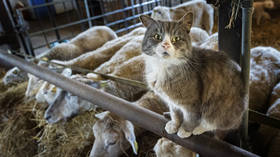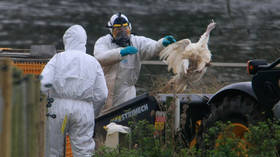Sputnik V creator warns of global ‘cat flu’ pandemic

The head of Gamaleya Research Institute, Alexander Gintsburg, has warned that H5N1 avian flu is spreading among cats and could jump to humans, potentially triggering a deadly pandemic. Gintsburg said the threat is serious enough to warrant immediate vaccine development.
“[A vaccine prototype] should go through Phase I and II clinical trials against the strain that is very likely to start transmitting not just between animals, but from human to human,” Gintsburg told Izvestia on Wednesday.
The institution was behind Sputnik V, the world’s first registered Covid-19 vaccine.
According to Gintsburg, a mutation of H5N1 allowing airborne human transmission could lead to a crisis worse than smallpox.
“The fatality rate is 50–70%, and if transmitted by air, smallpox will seem like child’s play compared to what could happen after one or two mutations,” he said.
Gintsburg said Russia needs to be able to manufacture the vaccine quickly.
“A ready prototype should be available to scale up production in three to four weeks and introduce it for public use,” he added. However, he noted that no such program currently exists.
In early May, University of Maryland researchers identified a surge in avian influenza cases among domestic cats. The study, based on two decades of data, found over 600 infections in cats across 18 countries, with a fatality rate exceeding 50%.
“Domestic cats are susceptible to [bird flu] and provide a potential pathway for zoonotic spillover to humans,” the researchers warned, stressing the risks to people in close contact with animals during outbreaks.
Cats typically contract H5N1 by consuming infected birds, raw poultry products, or unpasteurized milk from infected livestock. The study also highlighted unknown transmission routes, including indoor cats with no clear exposure.
The World Health Organization (WHO) has reported a total of 974 confirmed human cases of H5N1 across 24 countries since 2003. Among these cases, 470 have resulted in fatalities. Such cases are typically associated with direct or indirect exposure to infected poultry. The virus has not achieved sustained human-to-human transmission, but health authorities continue to monitor its evolution closely due to its high mortality rate and potential pandemic risk.
The US Centers for Disease Control and Prevention (CDC) considers the risk to the general public to be low.














